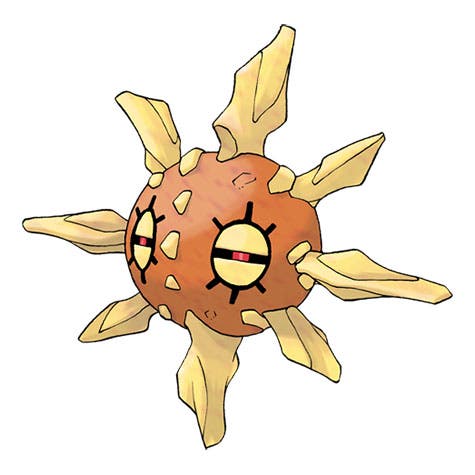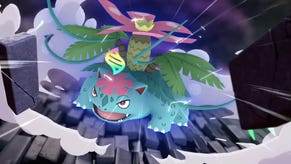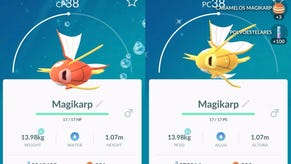Pokémon Go night and day spawns explained
How do night and day work in Pokémon Go?
Night and day in Pokémon Go are one aspect of the in-game weather system that is meant to mirror the real world.
Along with the rest of the weather system — along with most aspects of the game — the diurnal cycle is very poorly explained in Pokémon Go, which makes events like summer 2023’s Solstice Horizons, with daytime and night-time collection challenges, incredibly confusing. On top of that, certain Pokémon with special evolutions only evolve during certain times of day!
Here we’ll cover how this system works, and how you can use it to hunt for the Pokémon you need for Go Battle League and raids. You might even say the comparison between our explanation and Niantic’s is like night and day…
On this page:
When do night and day start in Pokémon Go?
Night and day are aspects of the weather system in Pokémon Go, as seen by the Sunny/Clear day/night weather information pages. We also know that the position of the sun in-game is supposed to reflect where the sun is in real life, just as how Nosepass in Pokémon Go will always face magnetic north in the overworld map.
Real-time sunset now live in Australia.
by u/TheBilingualSnail in TheSilphRoad
Thanks to Reddit user TheBilingualSnail for confirming when this change went live.
As such, with the sun moving in real time, and neat little nods like your shadow getting longer as the sun gets lower, the game is supposed to switch between night and day at the expected time of sunset in the country you’re currently in.
However, just as the game can be slow to update when the weather changes, and is sometimes just plain wrong, Pokémon Go struggles with when day and night start and end.
Anecdotal evidence and community reports show that this is particularly true in parts of Europe where night and day are radically different at different times of year, like London the in the winter, when it can be dark at 3:30pm, but day in the world of Pokémon Go, or Oslo in the summer where sunset can be as late as 10pm.
The issue is that Niantic’s opacity in how this system works means that players are left to guess. The best bet is to assume (and hope) that if the sun’s up in real life, it’s up in the game.
The Shared Skies Season is here! The Strength of Steel event is currently running in Pokémon Go. Go Fest 2024 may have been and gone, but you can still play around with the Fusion mechanic. Meanwhile, ticket holders can finish Go Fest 2024: A Shadowy Caper and The Dusk Settles. Don't forget to try out Routes, Gift Exchange and Party Play while you're hunting down rare Pokémon, fighting in the Go Battle League or competing in PokéStop Showcases.
When do nocturnal and diurnal spawns change in Pokémon Go?
This is where things get complicated.
Night and day have long existed in the main-series games, with nocturnal Pokémon entering the franchise with Pokémon Gold and Silver. In the main series, the spawn pool — the list of Pokémon you can catch — is governed by whether the game thinks it’s night or day.
In Pokémon Go, a game that tries to mirror the real position of the sun, you might expect that the nocturnal Pokémon come out as night falls, as logic tends to dictate. However, research dating back to 2018 shows that the spawn swap is actually sunset/sunrise +2 hours.
This means that nocturnal Pokémon come out around two hours after sunset and diurnal Pokémon come out around two hours after sunrise.

The complicating factor is that spawns are based on time of day, and stick around for a predefined amount of time — usually 15 minutes, but sometimes (rarely) up to 45. There is also an hourly wipe to respawn the entire map, which is best highlighted by events such as Go Fest with its rotating biomes.
But since the sun doesn’t rise and fall in such tidy increments, there is bound to be some overlap between the sun rising and falling and Pokémon spawning and despawning.
This means that if the sun sets at 9:17 in your neighbourhood, nocturnal Pokémon should start to pop up anywhere between 10:47 and 11:47 (two hours, give or take 30 minutes). The maths is not exact, however, since we don’t have Niantic’s feed-in data. What we do have is community consensus that two hours after sunrise/sunset is far too long — especially considering the issue of late sunrise and sunset during certain times of year!
Thanks to kairality and mikeleemikey on Reddit for collating this information back in 2018, based on when Lunatone and Solrock appear.


These two Pokémon only appear during their respective times of day, making them a great measure for the time of day Pokémon Go assumes it to be.
Another barometer, though a far less accurate one, is to simply look out for the number of certain spawns — outside of events, Dark and Ghost-type Pokémon are much more likely to spawn during night than day. This means that if you need a Trevenant for Go Battle League, you shouldn’t be looking for Phantump during your lunchtime stroll!
The kicker — because things need to get more complicated still — is that outside Lunatone and Solrock, nocturnal Pokémon such as Hoothoot and Dark-type Pokémon such as Murkrow can and do spawn during the day!
Finally, it’s worth noting that Niantic has the power and ability to change this, as shown on July 21, 2023, when they swapped spawn times half-way through the Solstice Horizons event. For the remainder of the event, spawns were set to change at 6am and 6pm, regardless of your local diurnal cycle!
Hope this helps you continue catching Pokémon - whether its night or day!








